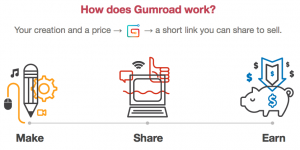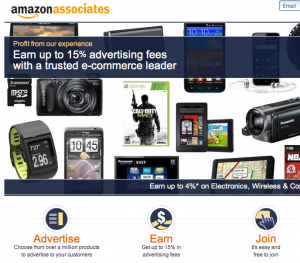Content Marketing
How Content Can Generate Passive Revenue
The stereotype of the blogger in pajamas hasn’t left our collective imagination, because deep down, we want it to be true. How can a person make money in their sleep, or at least their sleepwear?
 Passive income aims to do that, with one caveat. The mantra is: “Work hard now, reap the benefits later.”
Passive income aims to do that, with one caveat. The mantra is: “Work hard now, reap the benefits later.”
Pat Flynn of the site Smart, Passive Income is the first to say that generating revenue this way does not happen overnight and is not easy — but it is possible.
Content drives future profits
Writing a book is an example of passive income — once the work is done, you’ll collect profit as long as people continue to discover and purchase the book, with minimal effort such as continued marketing.

For content creators, a new digital goods platform, Gumroad, offers smaller startup costs for selling an e-book. (Read more about why Gumroad nets more profit to writers than Amazon).
In addition to your own products, passive revenue can also be generated from selling the products of others.
Promise and perils of affiliate marketing
 Amazon has made this practice, known as affiliate marketing, mainstream by allowing anyone to sell anything, from books to diapers, and keep a small percentage of each transaction.
Amazon has made this practice, known as affiliate marketing, mainstream by allowing anyone to sell anything, from books to diapers, and keep a small percentage of each transaction.
But just like the content you place on your site, any affiliate links should be carefully tailored to your audience. Ideally, affiliate links will improve the user experience of your readers while also bringing in a new source of revenue.
How one blogger makes it work
Alexis Grant, who blogs about careers, traveling and writing, says she only includes affiliate links on her site from products she planned to write about anyway. She often includes these links inside blog posts, in her sidebar (example: Thesis, the Wordpress theme used on her site) or in her newsletter.
Because Grant has a targeted audience, she is better able to choose what products to post with affiliate links. This will increase the percentage of both click-throughs and eventual purchases. Starting with a very large audience is the best way to gauge potential returns.
Disclosure is important. First, because it maintains your trust with your audience, but also because readers might remember to come back to your site and purchase through you because they know it’ll benefit you.
Top image courtesy of kentoh/shutterstock
Get better at your job right now.
Read our monthly newsletter to master content marketing. It’s made for marketers, creators, and everyone in between.





